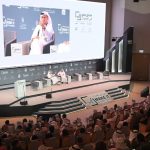Virtual smart cities using Metaverse, digital twins

Government agendas and policy plans facilitating the development of smart cities to achieve a more sustainable future have long been underway. With Seoul lately announcing its plans to spend $3.3 Billion by 2030 to become a Metaverse city, the evolution of smart cities is about to take another turn.
In addition, the UAE has recently announced its plans to create a virtual city in the metaverse earlier this year. Officials have remarked that the metaverse will result in inclusion in the education and health care sectors and will help overcome temporal and spatial limitations in the real world.
Becoming a Metaverse city means that citizens will be able to visit government offices and finish transactions without being physically there. Technologies deployed within the metaverse such as AI will intelligently manage energy and wastewater recycling. Most importantly, this can help accelerate the mission towards a more sustainable future, a top global priority. By shortening commutes and lowering carbon emissions, smart cities will not only support sustainability, but will improve the quality of life by 10 to 30% as quoted in McKinsey.
Since the multiverse is a mix of real and virtual worlds, the use of AI, Big Data, Digital Twins, and IoT will be heavily relied on and will consequently have a larger role to play in this transition.
Digital twin technology is an essential building block of the Metaverse. A recent report by Grand View Research suggests that the Digital twin market is expected to reach $86.09 Billion by 2028. Digital twins, a virtual representation of an object or system in the digital world of the Metaverse, uses real-time data, simulation, and machine learning to help in decision-making.
In other words, Digital twin technology not only creates a replication of reality, but its sensors can relay real time information by synchronising the digital environment with the physical world.
For example, through replicas of roads, buildings and public spaces, digital twins can help city planners better plan transportation systems and warn inhabitants about pollution levels and other suspected problems. Currently, 3D digital twins of whole cities already exist. Singapore is a great example as the country created a digital copy of the city to enable policymakers to explore future scenarios and reduce emissions.
Deploying digital twin technology in the metaverse can significantly aid with smart city planning through helping with economic development, reduction of ecological footprint and enhancing the overall quality of citizens lives.
The Internet of Things technology is known to be a pillar of smart city development. According to the UN, about 60% of the planet’s population will live in cities by the year 2030. This makes resource management more critical than ever before. Through the deployment of IoT technology, cities will be able to meet the demands of residence in an efficient way.
With the clever use of smart city practices and widespread deployment of IoT technology, the cities of tomorrow will be able to meet the demands of their residents in an effective and efficient way.
IoT supports the connection of different technologies and big data, an ideal mix for the creation of smart solutions. Some experts are already calling IoT and the metaverse a technology-twin. IoT can enable the Metaverse to analyse and interact with the real world. In return, the Metaverse will also act as a 3D user interface to the IoT devices. In other words, IoT provides context and situational awareness to AR applications and provides triggers for things in the digital and virtual realm to interface with the physical world.
Since AI is already heavily deployed in the construction of smart cities, it will undoubtedly play a larger role in metaverse cities. In the past, skilled developers semi-manually created every single part of digital environments needed for construction models. Now, elaborate models with details as intricate as objects having the right collision will be created using AI with very little human input.
In a digital environment, users will be able to occupy digital spaces, interact with them and carry out various activities. As smart cities require processing of enormous quantities of data, AI can efficiently sort large quantities of data to generate predictions and cost-effective solutions required to fuel Smart City technologies.
Combined with the UAE’s goal to reach net-zero emissions by 2050, Dubai is recently pioneering metaverse initiatives. In addition to announcing the creation of a virtual city, it has recently announced its entry into The Sandbox, marking the first time for a government authority to usher into the Sandbox universe. As the UAE takes significant steps towards becoming a major metaverse hub in the region, the prospect of this technological deployment in smart cities will be an exciting possibility to unwrap.
Key takeaways
- With Seoul announcing plans to spend $3.3 Billion to become a Metaverse city, evolution of smart cities is about to take another turn.
- UAE recently announced its plans to create a virtual city in the metaverse.
- Metaverse will result in inclusion in the education and health care sectors.
- Metaverse will help overcome temporal and spatial limitations in the real world.
- Digital twin technology can relay real time information by synchronising digital environment with physical world.
- Users will be able to occupy digital spaces, interact with them and carry out various activities.
- As smart cities require processing of enormous quantities of data, AI can efficiently sort large quantities of data.
Since multiverse is a mix of real and virtual, the use of AI, Big Data, Digital Twins, IoT will be relied on and will have a role to play in this transition.






